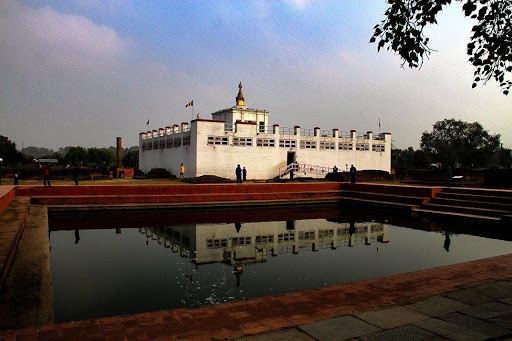Nantes City Guide
Nantes: Regularly quoted in newspapers as being one of the nicest cities in France, Nantes is also renowned for being a rich, lively, and innovative city. Its economic clout makes Nantes France’s 3rd largest industrial city and 2nd most successful city in terms of employment growth.
Nantes strikes a remarkable balance between historical heritage and innovation, way of life, economy, and culture. Located at the mouth of the Loire River, Nantes is, by nature, a welcoming, creative and forward-looking city.
It is the administrative seat of the Loire-Atlantique department and the Pays de la Loire région, one of 18 regions of France. Nantes belongs historically and culturally to Brittany, a former duchy and province, and its omission from the modern administrative region of Brittany is controversial.

Nantes was identified during classical antiquity as a port on the Loire. It was the seat of a bishopric at the end of the Roman era before it was conquered by the Bretons in 851. Although Nantes was the primary residence of the 15th-century dukes of Brittany, Rennes became the provincial capital after the 1532 union of Brittany and France. During the 17th century, after the establishment of the French colonial empire, Nantes gradually became the largest port in France and was responsible for nearly half of the 18th-century French Atlantic slave trade. The French Revolution resulted in an economic decline, but Nantes developed robust industries after 1850 (chiefly in shipbuilding and food processing). Deindustrialization in the second half of the 20th century spurred the city to adopt a service economy.
Nantes France
Nantes is the city to use as a base if you want to do some rural exploring as well. You’re on the edge of Château country, so if you hire a car during your stay, you’ll be able to delve into the gorgeous Loire Valley and explore some of France’s most stunning castles. Reading our guide to The Most Magical Châteaux and Castles in the Loire Valley is a good place to start if this is right up your alley.
As well as being on the edge of Château country, Nantes is only a hop, skip, and a jump to the sea. This makes Nantes just as attractive for summer breaks as it does winter; when you’ve seen the sights, schedule a few days trips to the beach. One of the nearby gems to the southwest is the stunning island Noirmoutier-en-l’Île. Sand dunes meet pine forests, all within a couple of hours drive.
Île de Nantes is an island neighborhood of Nantes located in the city center, surrounded by the Loire River. Part of a massive redevelopment project, Île de Nantes is a fascinating section of the city to spend some time in. It comprises four districts. If you’re looking for art, head over to Republic, and to walk off that lunch, stroll through the Parc de Beaulieu. The Quai des Antilles is also one of the island’s highlights – here, you’ll find wide paths for strolling, bar terraces, and the impressive installations.
What is Nantes known for?
Is Nantes safe?
Nantes is a very safe city in comparison to most major European cities. Police presence is reasonably visible and the trams are patrolled by TAN officials at night. Be prudent and exercise caution after dark. The European emergency number 112 is accessible in Nantes.
Central Nantes.
The most westerly of the big cities in France, Nantes is one of those cities that is not on the road to anywhere else. At least that it the situation today; in the past, it was very different.
Until the nineteenth century, Nantes was one of the most important port cities in France. In the Middle Ages, it was one of France’s greatest ports for trade with other parts of Europe, notably with England and Portugal; later it was the gateway to North America, the port through which came in and went out a good proportion of France’s international trade, not just with Canada, Acadia and the nascent USA, but also with the Caribbean and other parts of the world.
And then ships got bigger and railways made land transport faster and easier and Nantes, just like Bristol in the UK, found itself “up the creek”, too far inland along a tidal estuary to meet the new demands of international shipping. And, as with Bristol or even – more recently – London and other cities, Nantes’ riverside port activity dwindled and the city’s economic significance fell, as business moved downstream, in this case to Saint Nazaire, at the mouth of the Loire.
By that time, however, Nantes was already too strongly established as a city, and too big, to fade away. In bygone centuries, the city that stood guard over the lowest bridging point across the Loire had been the capital of the powerful Dukes of Brittany, and the city had grown up around their massive fortress close to the water’s edge, the Chateau des Ducs de Bretagne. Later, as France became one of the great colonial powers of Europe, trade brought great wealth to the city which grew in size and influence. The merchants of Nantes, like their counterparts throughout the great European port cities of the time, were active in the slave trade with the Americas, which was one of the businesses that enriched the city in the 18th century, until after the French Revolution when in 1794 France was the first European nation to ban slavery in all its dominions.
Edict Of Nantes Definition
Today, Nantes is the eighth largest city in France, with a population of over 600,000 in the urban area. The historic part of the city stands on the north bank of the Loire, around the confluence of the river Erdre. The meeting of the two rivers is not however a feature, as back in the 1930s the lower end of the Erdre was filled in to make more room in the city center, and the river now flows out into the Loire via a canal tunnel.
Apart from its medieval / Renaissance castle, which now houses the city’s museum, and the late medieval cathedral of St. Peter and St.Paul, the historic center of Nantes is largely characterized by streets and buildings that were put up in the period of the city’s commercial heyday, from the late 17th century to the early 19th century. This helps to give Nantes a slight Parisian feeling – like a small version of Paris in the west of France.
The once busy port area of Nantes is now very quiet; the little commercial shipping that still comes up the Loire as far as Nantes uses wharves on the south side of the Loire or on the western outskirts of the city, and the few cruise liners that make it up the Loire estuary have to dock well away from the center. The Quai de la Fosse, closest to the city center, has no commercial shipping, but is served by pleasure craft and is home to some historic ships, including the Maillé-Brézé, a historic warship, and naval museum.
Today, more than a port, Nantes is the administrative and commercial hub of northwestern France. The city that was until the 16th century the capital of Brittany is now no longer part of Brittany; the department of Loire Atlantique, of which it is the capital, was definitively hived off from Brittany under the Vichy government during the second world war and has since become the capital of a new administrative region – with little historic basis – the Pays de la Loire, created in 1963. In that respect, Nantes remains a regional capital… but no longer the capital of Brittany. That is now Rennes.
Revocation Of The Edict Of Nantes
As a travel writer (and therefore frequent flier), I’m always keen to start exploring a new destination straight off the plane. That’s why I think Nantes, which is just a short flight from the UK, makes an ideal weekend break destination. Here’s how to maximize your time there, from touchdown to takeoff.
Ensure a smooth arrival
Nantes airport is located in Bouguenais, a small town about six miles from the city, so you’ll need a taxi or bus ride into the center. Taxis from Bouguenais cost around €30, while the shuttle bus (€9) departs every 20 minutes and takes only half an hour to arrive in Nantes. Rather drive? Car hire companies are located in a building opposite the main terminal. There’s a self-service fuel station by the entrance to the rental return – essential info if you’ve ever driven around France shouting “why are there no service stations?” when you’re desperate to fill your tank and return your car.
Make drinks the first stop
There’s nothing like wheeling your suitcase out of the office doors and knowing you’ll be miles away in just a couple of hours. Catch the 3 pm flight from Gatwick and you’ll be landing by 5:25 pm, with plenty of time to find a suitable bistro for drinks. Check out Café de l’Orangerie – hidden behind a park near the bus drop-off point, it’s a convenient and pretty place to sample local beers and wines.











